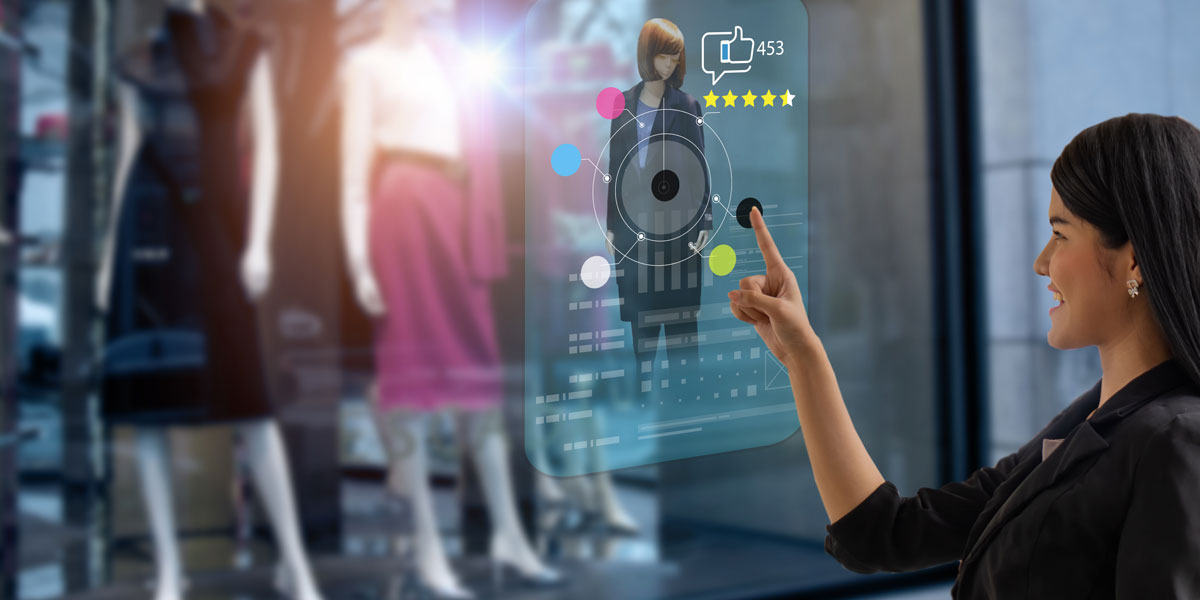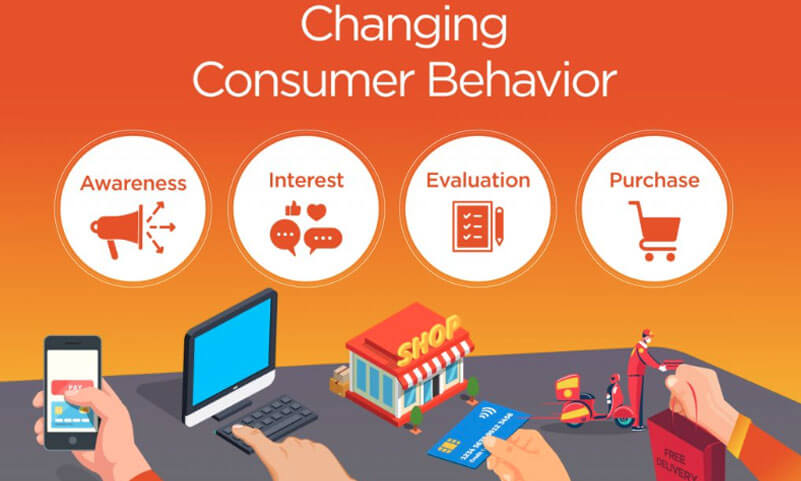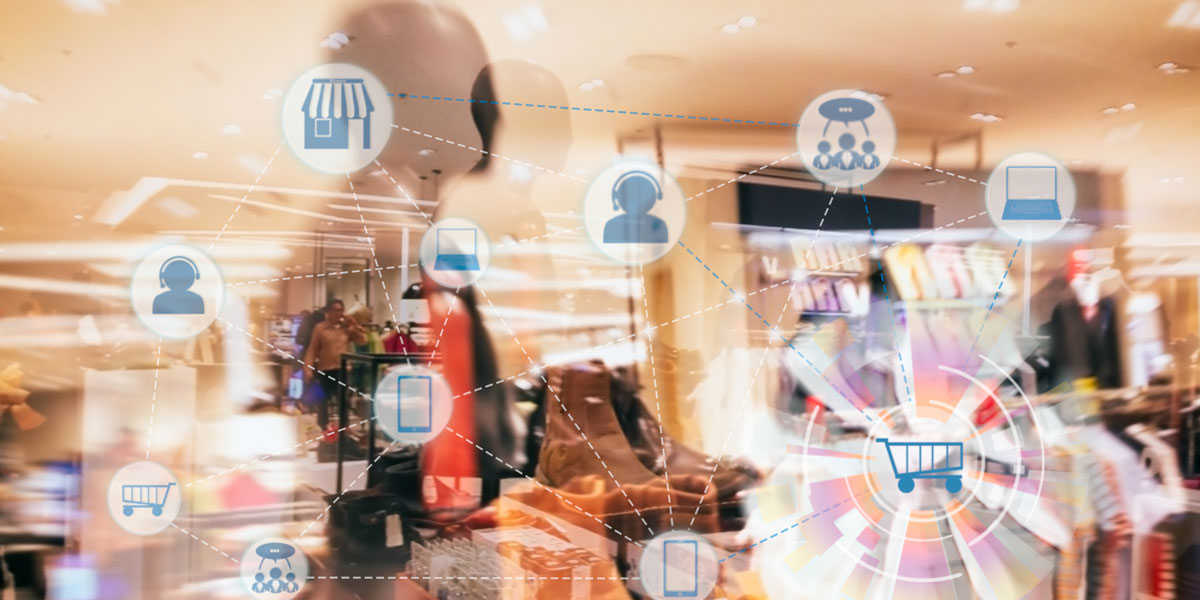If the last two years have taught us anything, it is that the customer defines your brand. The pandemic led to tremendous shifts in the way consumers shop and brands operate. With the popularity of e-commerce growing by the day, creating an unparalleled omnichannel brand experience has become essential. Today, hybrid ‘phygital’ models, immersive experiences, and streamlined processes are set to shape the CPG industry. We’ve identified 7 trends that are set to shape CPG operations in 2022.
1. Smart tech and digital solutions for enhanced CX
In a world where CX drives brand growth, increasing investments in smart technology and digital solutions have become crucial. By 2026, B2B firms will eliminate 40% of human touchpoints in marketing and sales. In turn, they will leverage AI analytics to deliver deeply personalized customer journeys. As retailers look to make the most of first-party customer transaction data, AI’s retail market share is expected to grow to $20 billion by 2026.
Firms are increasingly betting on customer data platforms (CDPs) that unify fragmented customer data across multiple systems. This enables marketers and CX professionals better understand their customers and scale personalized experiences across channels. Implementing CDPs not only provides an easy-to-manage interface nut it also helps analyze and segment large amounts of data. Moreover, it can generate insights from predictive analytics to enhance CX.
Brands are further adopting immersive technologies like AR/VR to foster interactive and unique experiences. CPG firms are already reinventing the retail experience by integrating technologies like 5G to enable faster, innovative, convenient, and transparent processes with applications like magic mirrors. In fact, the retail industry is leading the way in the adoption of cloud with over 78% of retailers and 71% of CPG brands advancing cloud investments and driving some of the highest ROI.

2. Protecting customer data
Offering personalized services requires gathering vast amounts of personal consumer data. This road is a rocky one as customers today are hesitant to share data citing privacy concerns. Forecasts indicate that by 2024, 40% of consumers will mislead behavior tracking metrics to devalue their data. Estimates indicate that brands will begin openly incentivizing consumers to share personal data in exchange for rewards. In such an environment, taking measures to protect consumer data and adopting intelligent and safe methods of data sharing is key. One of the ways forward is extending data privacy protections and establishing KPIs stating ethical use of data. Employing technologies like Cloud-based platforms will also play a key role in protecting the privacy of data collected.
Another emerging game-changer is second-party data sharing through data clean rooms with retailers and partners. Clean rooms provide a secure platform for data access and analysis that ensures privacy. Brands can leverage this in situations where they’ve previously had to rely on third-party data and where first-party data is difficult to obtain.
3. Personalized consumer services for different segments for changing consumer patterns

The COVID-19 pandemic led to rapid shifts in consumer behavior as preferences changed and brand loyalties shifted. Customers began to explore and experiment with newer, innovative CPG products.
Customers today turn to brands to relieve stress with uplifting products and engaging, rewarding experiences. This presents great scope for products catering to self-care like at-home spa kits, skincare, and comfort food.
What does this mean for CPG brands? Catering to different consumer segments by offering personalized, targeted services can lend to a lasting relationship with consumers. Value-driven customer experiences and loyalty programs help the brand stick throughout the customer journey. Brands that invest in subscription-based billing models and provide immersive shopping experiences will transform mere browsing into an engaging experience. This can help them convert and retain greater numbers of virtual shoppers.
4. Seamless Omnichannel experience
A seamless omnichannel experience has now become a mandate for CPG firms. By 2024, 30% of Fortune 2000 companies will implement the next-best action across their omnichannel environment. Both the in-store and online experience needs to be integrated to ensure a hassle-free product journey. How are brands doing this? Even a simple feature such as Sephora’s online option for customer favorite product lists or ‘loves’ was leveraged offline when retailers offered in-store tablets for customers to access their product wishlists on large screens while shopping physically.
An end-to-end experience ranges from a superior product delivery experience to multichannel marketing. To keep their headstrong in the game, brands today are investing across all platforms including traditional digital marketing, TV ads, PR, and influencer marketing.

a. Revamping distribution models
It’s the fastest delivery first that makes a brand any consumer’s winning choice. From formats across home-delivery, curbside delivery, and BOPIS (buy online pick-up in-store), the pandemic saw 50% of consumers spending more on conveniently fetching a product than the product itself. Subscription services like Walmart Plus and Amazon Prime have gained immense popularity for their promise of fast turnaround times.
b. Leveraging connected packaging with serialized QR codes
To amplify transparency and establish a closer relationship with consumers, CPGs are leveraging connected packaging. This utilizes serialized QR codes that provide shoppers with detailed information across all touchpoints of the product journey- tracing packaging, enabling security alerts, etc. Brands are also benefited as they can use this to verify authenticity and record buyer data that can further personalized consumer engagement.
5. Sustainable business and clear brand values
Sustainability has become the next most important rule of thumb for brands. Today’s customer looks beyond the product. Customers make value and purpose-driven purchases. If a brand’s values strongly resonate with consumers, you’re a winner. Over 47% of internet users state their intentions to switch products if a brand goes against their personal values. A driving force in customer decisions is sustainability. Does the brand undertake sustainable practices while manufacturing? Is the brand taking action in regard to climate change? Does it use sustainable packaging for its products?
This has prompted CPG brands to actively incorporate sustainability as an integral part of their product and processes. From innovative packaging methods to sustainable products and movements such as cruelty-free and fair trade, brands like Patagonia and Hippeas were built ground-up keeping sustainability in mind.
6. Building supply chain resiliency
The last two years have seen massive supply chain disruptions and roadblocks. The rapid growth of e-commerce required brands to pivot to high inventory levels and adopt innovative solutions like intelligent supply chains. This year, reinventing supply chain strategies will be crucial to avoid the mishaps of the previous years. Navigating rising shipping costs and persistent delays in the supply chain is going to remain a challenge for retailers and brands. Assessing supplier portfolios and maintaining in-house supply can be intelligent solutions. With schedule reliability dropping to an all-time low of 33.6% in August 2021, Costco joined the bandwagon of brands that decided to charter its own cargo ships to ensure overseas shipments were carried out with reliability and certainty.
Localizing delivery and addressing key issues like last-mile costs can help streamline processes. A linear supply chain is a thing of the past. Establishing a connected supply network that leverages real-time, consumer-specific data will help build supply chain resiliency going forward.
7. Rise of DTC and private labels and startups
Today, 55% of consumers prefer to shop directly with the brand. With D2C e-commerce sales in the US projected to surpass 129 billion USD this year, the online D2C market is more competitive than ever. Following the enormous success of pioneering D2C startups like Dollar Shave Club, which became flagship to the new model of CPG brands entering D2C, large legacy brands like Gillette, Heinz and PepsiCo are now catching up.
Today, brands face endless possibilities going beyond in-store experiences, including stores that are completely online and pick-up-only stores following the BOPIS model. This has given rise to a greater number of emerging startup brands in this space. Niche private labels by large brands are another emerging trend. Amazon for instance has grown several over the years including GoodThreads, AmazonBasics, AmazonEssentials, and Solimo.
For CPG firms, it will be important to maintain the balance between adopting streamlined internal operations and new-age innovative experiences catered to customer satisfaction. In 2022, leveraging the latest technology to adopt data-driven strategies and implementing sustainability in their vision and practices will be at the forefront of the CPG industry’s agenda.
The CPG industry is highly competitive and dynamic. Consumer goods companies must be nimble when it comes to adapting to changing trends and consumer behaviors.
Keep pace with today’s shifting market landscape with Netscribes’ market research solutions. To know more about how we can help your firm stay ahead of the curve, contact us.






